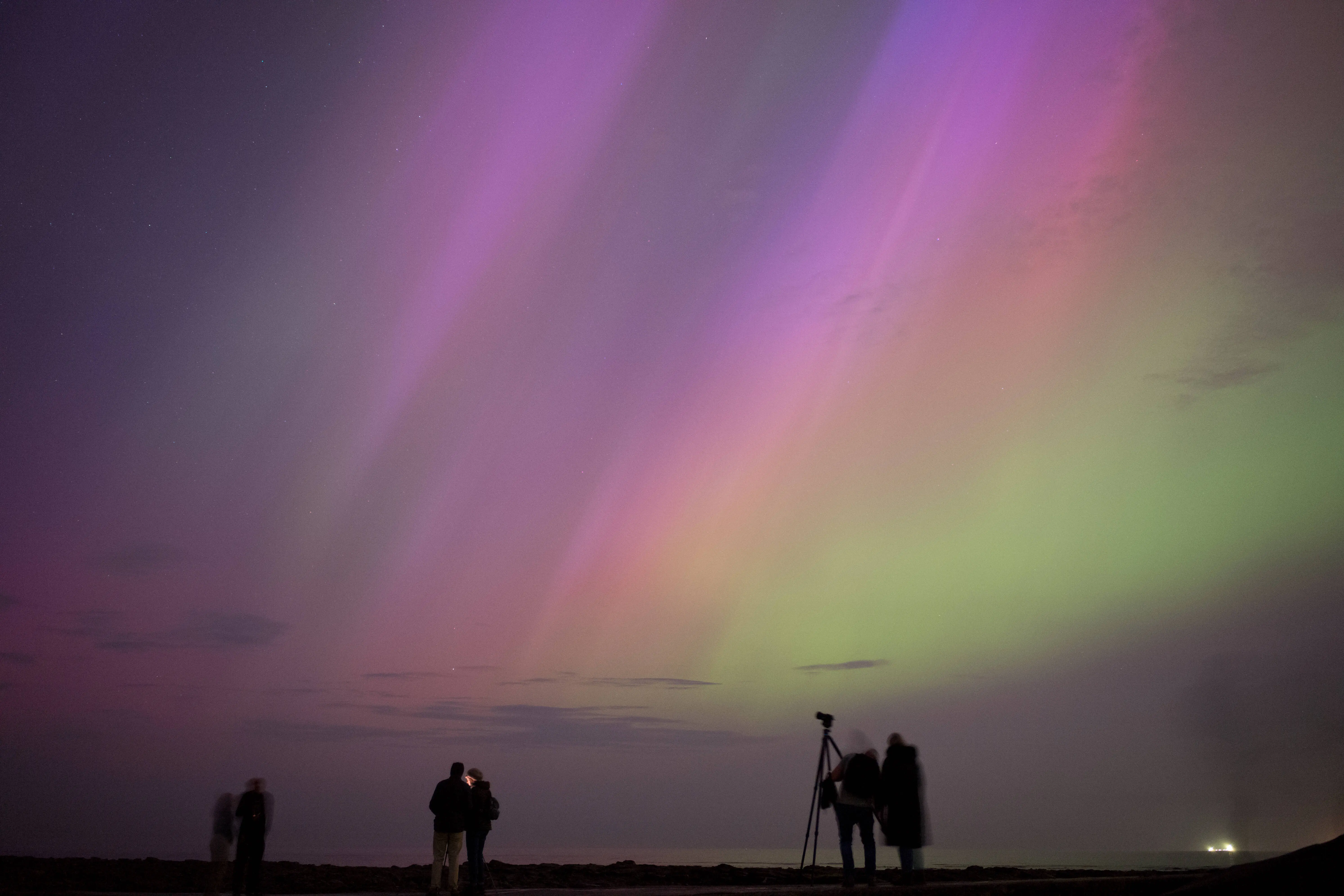Geomagnetic storm may bring Northern Lights to 22 US states: When and where to catch the colorful glow
-
 WHITLEY BAY, ENGLAND - MAY 10: People visit St Mary's lighthouse in Whitley Bay to see the aurora borealis, commonly known as the northern lights, on May 10, 2024 in Whitley Bay, England. The UK met office said a strong solar storm may allow northern parts of the UK the chance to see displays of aurora. (Photo by Ian Forsyth/Getty Images)
WHITLEY BAY, ENGLAND - MAY 10: People visit St Mary's lighthouse in Whitley Bay to see the aurora borealis, commonly known as the northern lights, on May 10, 2024 in Whitley Bay, England. The UK met office said a strong solar storm may allow northern parts of the UK the chance to see displays of aurora. (Photo by Ian Forsyth/Getty Images)The Northern Lights could be seen across parts of the United States this week. Experts say a geomagnetic storm on November 6 and 7 may make the sky glow in bright shades of green, purple, and pink.
This is a rare event because the Northern Lights are usually only visible in very northern areas like Alaska or Canada.
Why it’s happening
Scientists say this is happening because the Sun released a strong wave of energy known as a coronal mass ejection (CME).
When this energy reaches Earth, it reacts with our planet’s magnetic field and creates colorful lights in the sky.
According to the National Oceanic and Atmospheric Administration (NOAA), this week’s storm is expected to be strong enough to make the lights visible in more than 20 US states.
Where you can see it
Normally, auroras stay near the Arctic Circle. But during a strong solar storm, they can appear much farther south.
This week, people in 22 states could get a glimpse, including:
- Washington
- Oregon
- Idaho
- Montana
- Wyoming
- North Dakota
- South Dakota
- Nebraska
- Iowa
- Wisconsin
- Michigan
- Minnesota
- Illinois
- Indiana
- Ohio
- Pennsylvania
- New York
- Vermont
- New Hampshire
- Maine
- Massachusetts
- Connecticut
Even people in northern California and Colorado might spot a faint glow if skies are clear.
Best time to watch
The best time to look for the Northern Lights is between 10 p.m. and 2 a.m., when the sky is darkest.
Find a spot away from city lights, like a field or open area, and look toward the northern horizon.
You don’t need any special tools — just your eyes and some patience.
If you have a camera, you can try taking a photo using a long exposure setting. Sometimes the camera can capture colors that are too faint to see clearly.
What makes it special
Seeing the Northern Lights from the United States doesn’t happen often, so this event is exciting for both scientists and skywatchers.
The lights form when charged particles from the Sun hit gases in Earth’s atmosphere.
Oxygen makes green or red light, while nitrogen creates purple or pink colors.
Even though the storm may sound serious, it doesn’t affect people on Earth. It only creates this beautiful light show in the sky.
What scientists say
The Sun is currently going through a phase called solar maximum, a time when solar activity is higher than usual.
This means more solar flares and storms are likely to happen, which can bring more Northern Lights in the months ahead.
Scientists at NOAA say this week’s storm could bring some of the brightest auroras of the year — but only if the weather stays clear.
What to do
If you live in one of the 22 states listed, try to step outside late on November 6 or 7.
Look up and face north. If the sky is clear, you might see the colorful glow of the Northern Lights dancing above you.
TOPICS: Northern Lights
- Rare Northern Lights event could continue tonight across Chicago — when and where to look
- Northern Lights could be seen across the southern US as strong solar storm hits Earth
- Northern Lights may be visible in 14 US states from October 27 to 29 — here’s when and where to look
- Northern lights might light up skies in parts of 10 U.S. states tonight